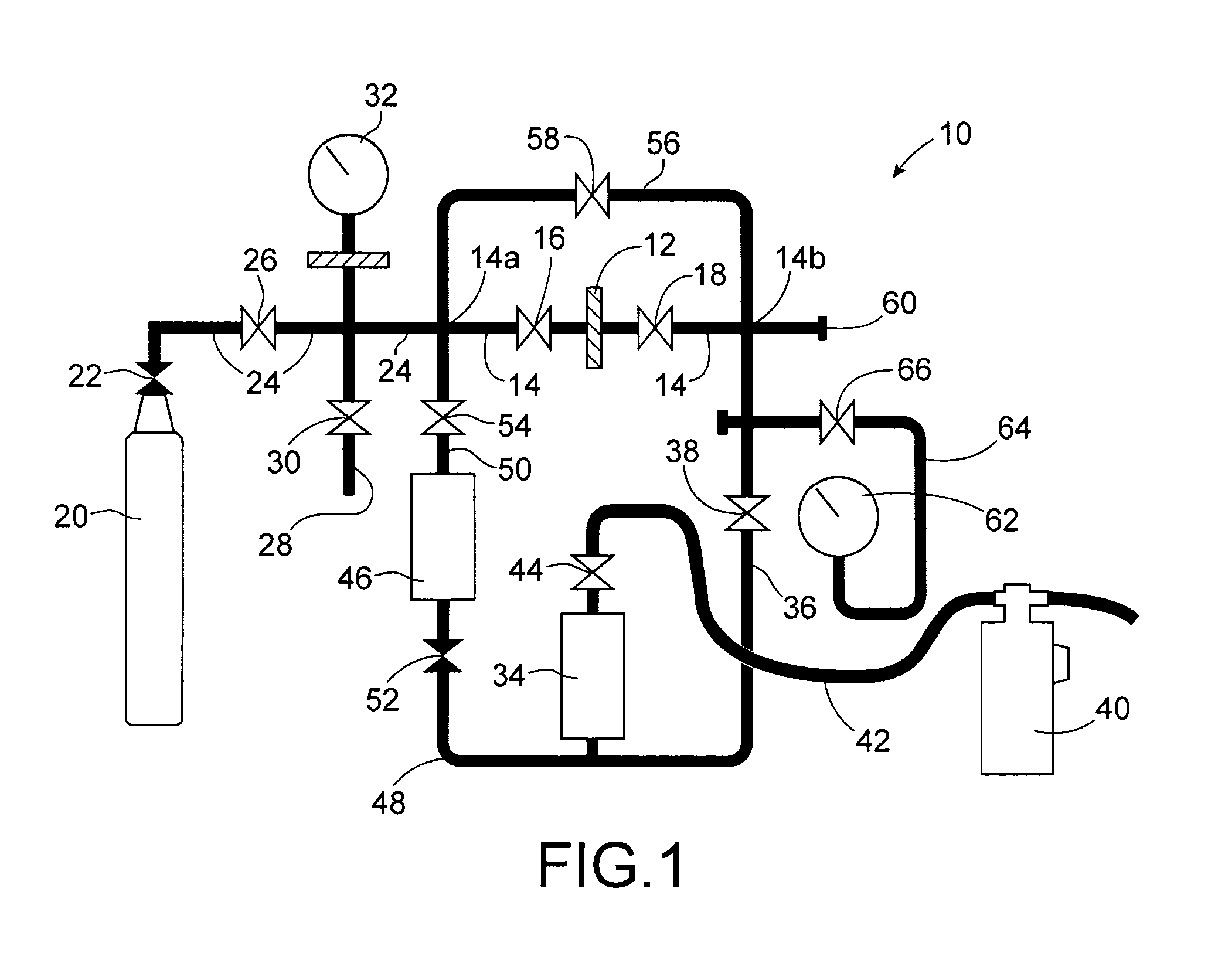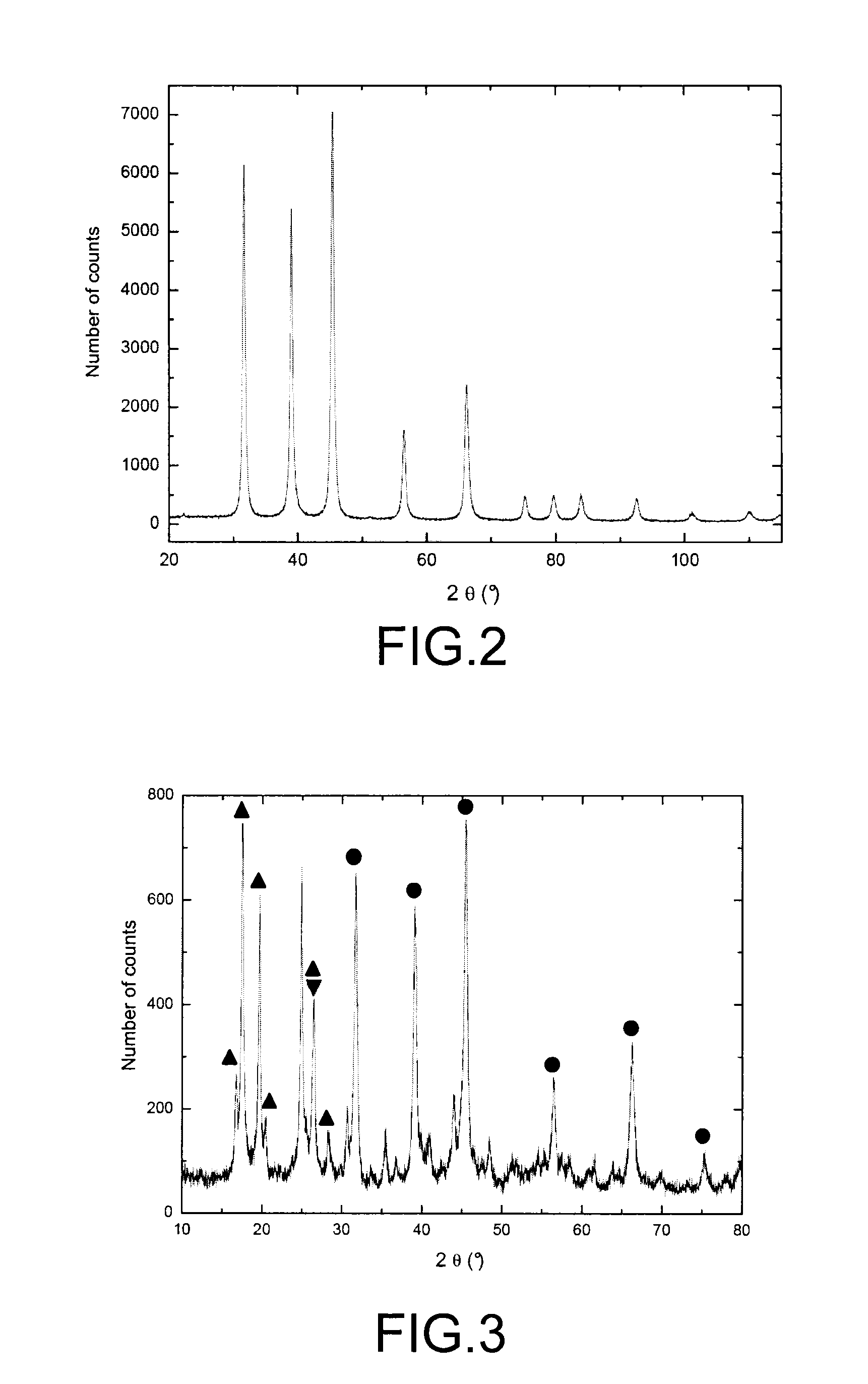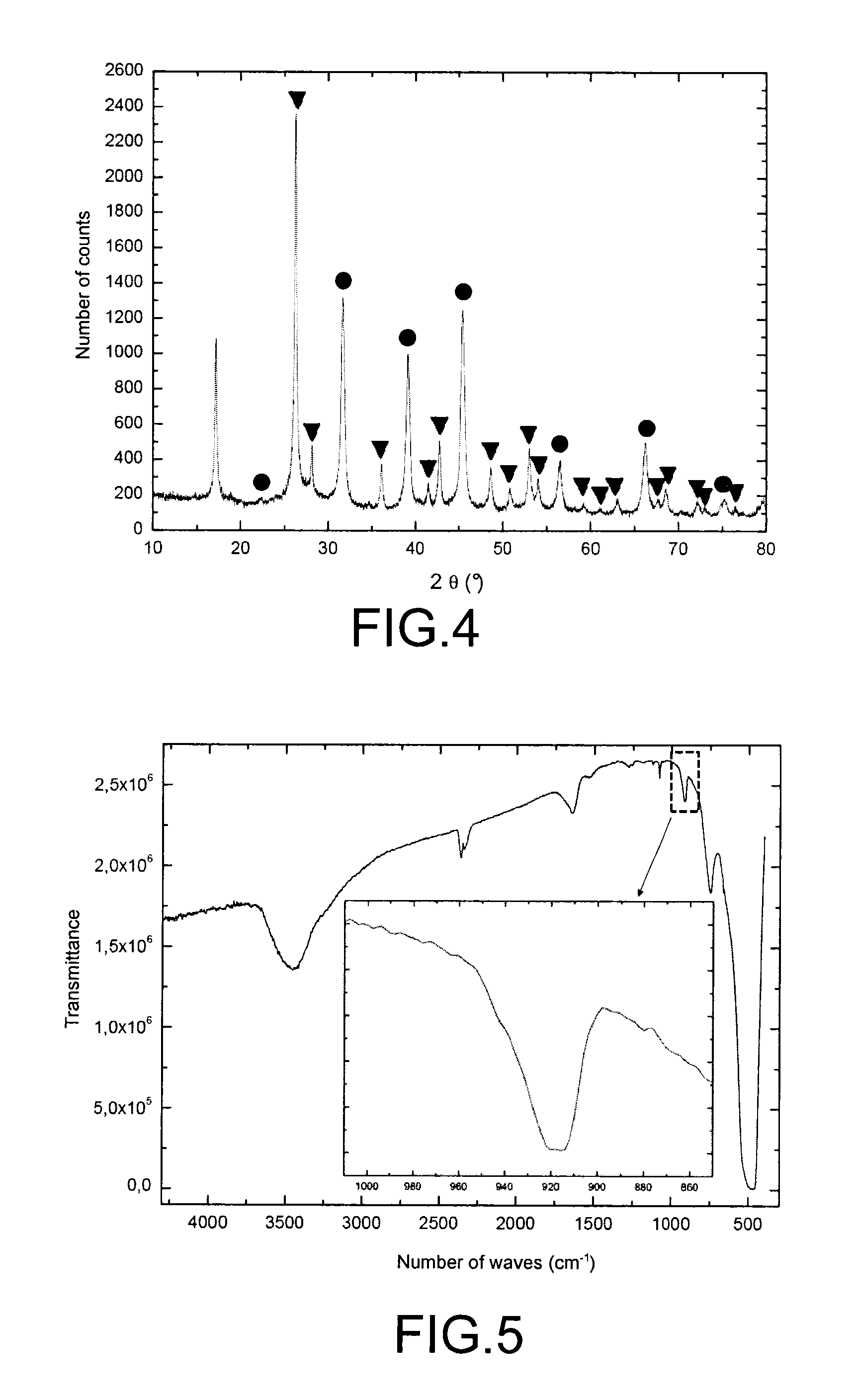Use of a KMgF.sub.3 compound for trapping metals in the form of fluorides and/or oxyfluorides in a gaseous or a liquid phase
a technology of oxyfluoride and compound, which is applied in the field of trapping metals in the form of fluorides and/or oxyfluorides in gaseous or liquid phases, can solve the problems of large quantity of effluents which must be processed, ineffective technique in purifying uranium with regard, and the use of magnesium difluoride traps cannot be envisaged to purify uranium hexafluoride on an industrial scal
- Summary
- Abstract
- Description
- Claims
- Application Information
AI Technical Summary
Benefits of technology
Problems solved by technology
Method used
Image
Examples
example 1
Preparation of a KMgF3 Compound Assisted by Microwaves
[0059]In a 100 mL reactor made of polytetrafluoroethylene (Teflon™), the following are introduced: 40 mL of isopropanol, 1.8 g of magnesium diacetate tetrahydrate (Mg(CH3COO)2·4H2O), 0.71 g of potassium bifluoride (KF,HF), 360 mL of 40% liquid hydrofluoric acid (HF), and a magnetic stirrer.
[0060]The reactor is closed and then placed in a bracket enabling the pressure and temperature present in this reactor to be controlled.
[0061]The bracket is itself placed in a microwave oven which is sold by the company CEM with the commercial name Mars 5™. This oven, which operates at a frequency of 2.45 GHz, is set to a power level of 300 W and programmed to reach a temperature of 150° C. in 5 minutes and remain at this temperature for 1 hour.
[0062]The synthesis product obtained at this stage is then centrifuged for 10 minutes at 5000 revolutions per minute (rpm) and then dried for 2 hours in a stove at 100° C. It is then calcinated for 5 hou...
example 2
Preparation of a KMgF3 Compound by Impregnation
[0064]In the present example, the preparation of a KMgF3 compound is accomplished by a method known as the “impregnation method”. It is undertaken according to the following protocol.
[0065]7.1 g of potassium bifluoride (KF,HF) is dissolved in 10 mL of water.
[0066]5.2 g of magnesium difluoride (MgF2) of surface specific area equal to 80 m2 / g is then added to this solution.
[0067]The suspension obtained in this manner is then stirred for 4 hours at 60° C., and then placed for 48 hours at an ambient temperature.
[0068]The resulting product is then dried at 100° C. in a stove, washed with 200 mL of water, centrifuged for 10 minutes at 5000 rpm, dried again at 100° C. in the stove and then calcinated for 5 hours at 200° C.
[0069]A product in powder form is then obtained, consisting of KMgF3, and having a surface specific area of 30 m2 / g, as determined by the BET method.
example 3
Assessment of the Ability of a KMgF3 Compound to Trap Technetium Hexafluoride (TcF6) and Characterisation of the Products Formed During this Trapping
[0070]The present example relates to a test intended to assess the ability of a KMgF3 compound to trap TcF6, and to characterise the products resulting from the reaction of the KMgF3 compound with technetium hexafluoride.
[0071]As technetium is a radioactive element, the test is undertaken using rhenium hexafluoride which has the same chemical properties as technetium hexafluoride—since rhenium and technetium indeed belong to the same column (VIIB) of the periodic table of the elements or Mendeleïev's table—but is more stable than it.
[0072]This test consists in causing a gaseous stream of rhenium hexafluoride to flow over a sample of the KMgF3 compound in a device which has been previously had all trace of moisture removed from it to prevent the rhenium hexafluoride from hydrolysing, and in then characterising by X-ray diffraction and by...
PUM
| Property | Measurement | Unit |
|---|---|---|
| temperature | aaaaa | aaaaa |
| temperatures | aaaaa | aaaaa |
| temperatures | aaaaa | aaaaa |
Abstract
Description
Claims
Application Information
 Login to View More
Login to View More - R&D
- Intellectual Property
- Life Sciences
- Materials
- Tech Scout
- Unparalleled Data Quality
- Higher Quality Content
- 60% Fewer Hallucinations
Browse by: Latest US Patents, China's latest patents, Technical Efficacy Thesaurus, Application Domain, Technology Topic, Popular Technical Reports.
© 2025 PatSnap. All rights reserved.Legal|Privacy policy|Modern Slavery Act Transparency Statement|Sitemap|About US| Contact US: help@patsnap.com



